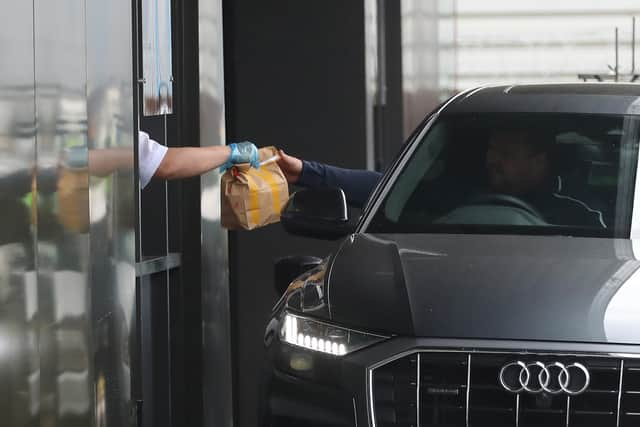Drive-through restaurants are here to stay - Rory Knox
There are now over 2,000 of these outlets across the country, as food retailers respond to customers’ ever-growing desire for immediacy.
And while drive-throughs were once exclusively the domain of fast-food outlets, brands like Costa, Starbucks, Greggs and Krispy Kreme have followed suit, in a bid to expand their reach beyond the high street, and its declining footfall.
Advertisement
Hide AdAdvertisement
Hide AdUpmarket brands are also shaking up their operations. Street food chain Chaiiwala opened a drive-through in Bolton last year, and the “healthy fast-food” company Leon, start-up @pizza, premium burger restaurant Five Guys and US fried chicken operator Popeyes are among those committing to launching UK sites.


We may see even greater diversity in future. Smaller businesses such as Baynes Family Bakers and Meatless Farm, (a plant-based burger and sausage maker) have also added drive-throughs to their portfolios in a bid to keep up with rivals.
This has led to an explosion in the number of drive-throughs – a 41% increase between 2015 and 2020 alone. And once Covid-19 hit, drive-throughs became even more popular, generating an overall annual revenue exceeding £3billion. These operations side-stepped strict sit-in restrictions, providing a lifeline to cash-strapped businesses both during and post-pandemic, as fewer staff were required.
This increase in drive-through demand is not without its problems, however. It has led to supply issues in terms of locations; retail parks are seen by many as ideal, but the number of suitable spots is finite. This increased competition, ultimately driving up rents. Clearly, this favours larger chains and may widen the gap between them and smaller competitors, who may be more reluctant to sign up to longer leases with inflated rents.
Drive-through fit-out costs are also higher compared to traditional units, particularly amidst ongoing supply issues within the construction sector, meaning smaller businesses may simply be priced out.


Our thirst for convenience also gives rise to environmental concerns. Drive-through use results in excessive vehicle idling, increasing fuel consumption and potentially damaging car engines and exhausts. The long queues we often see can lead to poor air quality in the area surrounding outlets.
Co-leader of the Scottish Greens, Patrick Harvie MSP, and some Green councillors recently called for a ban on new drive-throughs in Glasgow to tackle climate change, backed by a 500-strong public petition. They highlighted the city has more drive-throughs than Edinburgh, Aberdeen and Dundee combined, which they claim leads to dangerously high emissions. Despite the recent brand diversification, they also argue drive-throughs generally promote an unhealthy lifestyle.
In response, Glasgow City Council promised to address the issue in a new city development plan, but this is likely to take at least two years to be implemented. Environmental campaigners claim action is needed before then, given dozens more drive-throughs could open during this time.
Advertisement
Hide AdAdvertisement
Hide AdDespite these issues, it’s clear from their meteoric rise that the concept of drive-through food retailing is here to stay. Convenience is king, and these outlets offer customers a quick fix with minimal disruption to their daily routine, giving businesses the option to move away from the high street and diversify their offering. None of this is likely to change.
If anything, upmarket chains starting to take the plunge demonstrates hospitality businesses are increasingly seeing drive-throughs as a worthwhile long-term investment.
How exactly these aspirations chime with Scotland’s ambitious net zero targets will be worth monitoring closely over the coming years.
Rory Knox is an Associate, Anderson Strathern